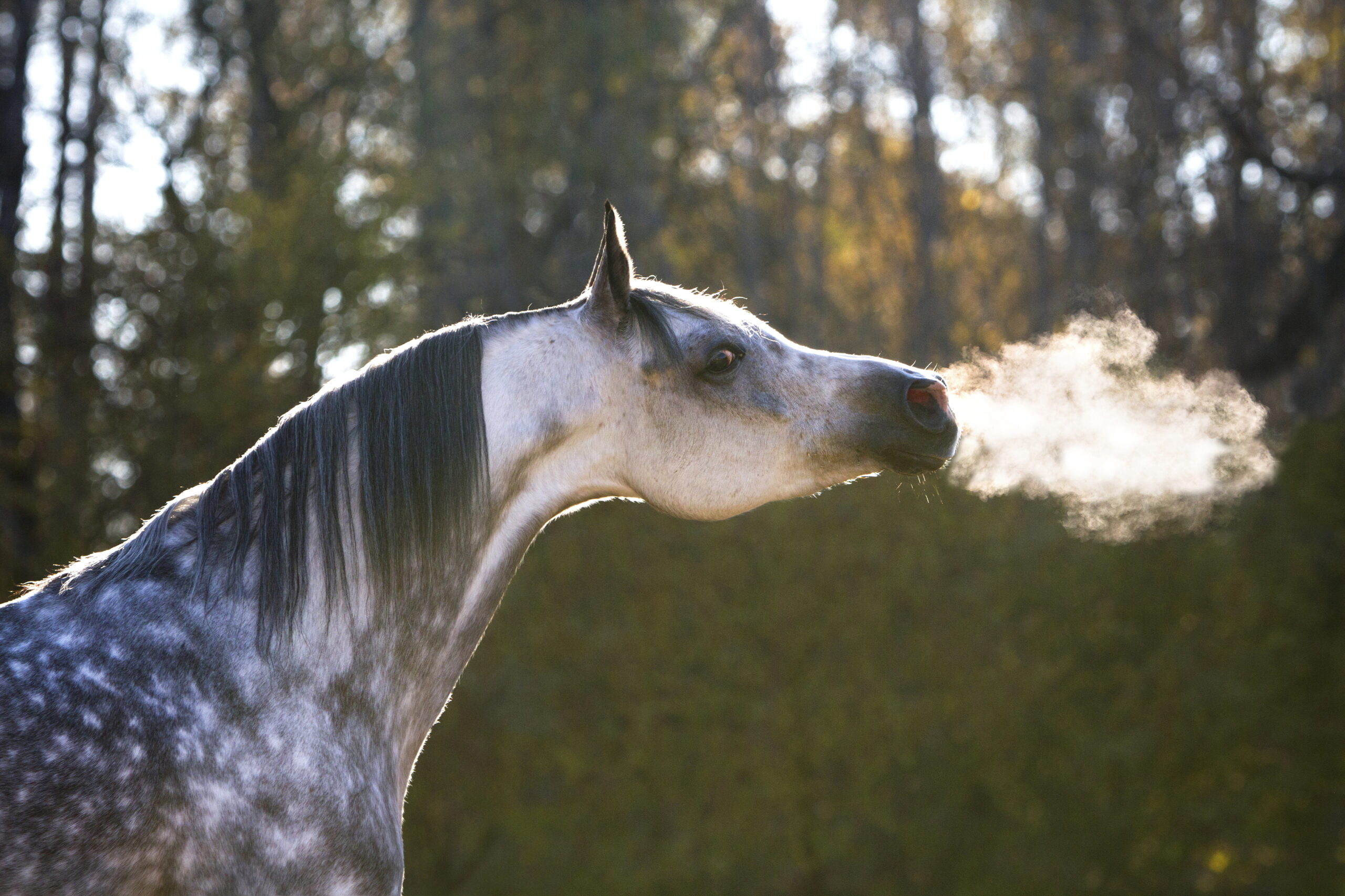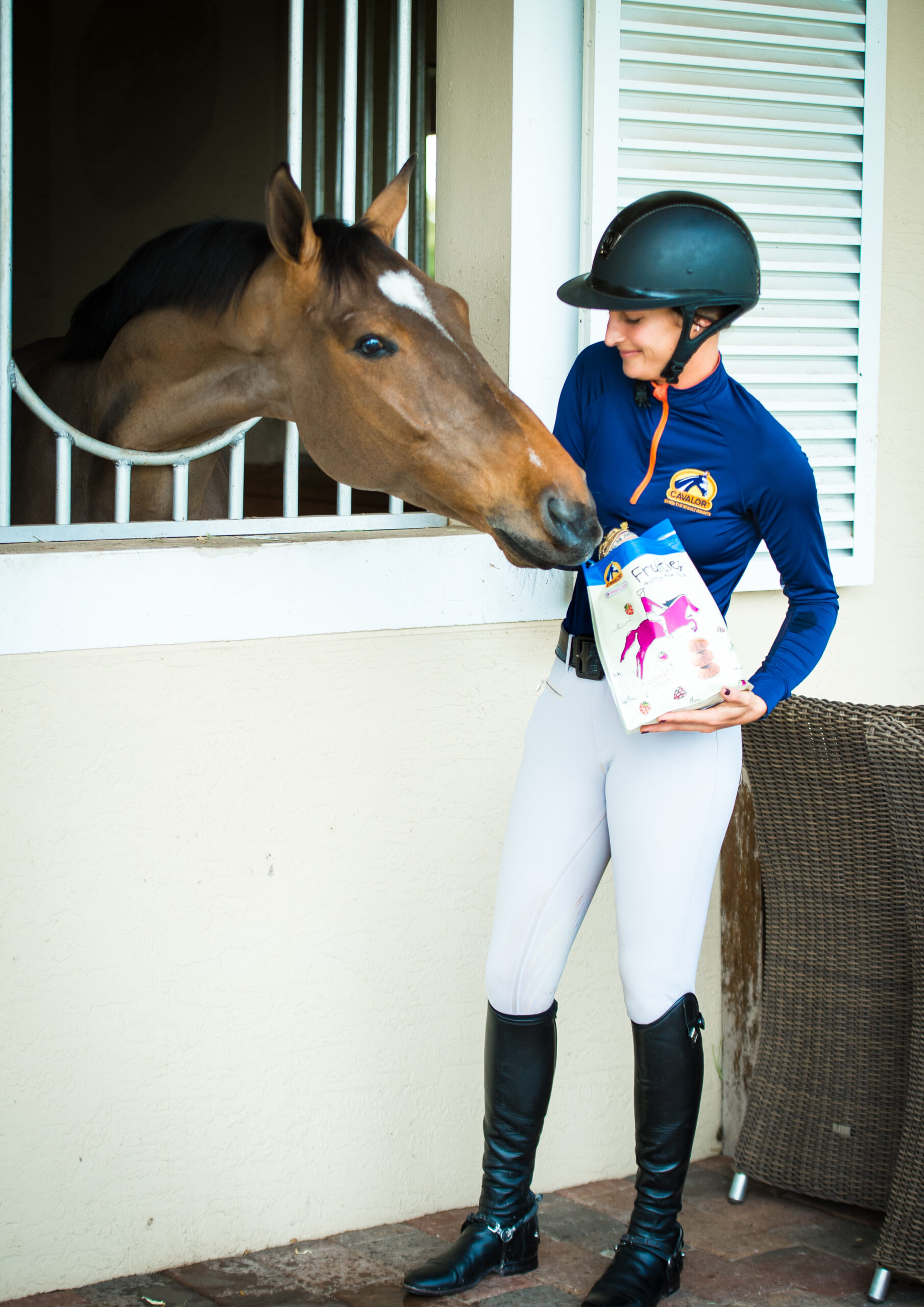Oxygen is critical to the functioning of the body; it is essential for providing the cells of the body with energy. Without oxygen, powerful muscles count for nothing. Never underestimate the power of oxygen!
The horse is an elite athlete, with a cardiovascular and muscular physiology far superior to that of a human. In humans, the heart is the greatest performance limiter, however horses have a different restriction: the equine respiratory system does not adapt to training, which renders it the limiting factor in exercise performance. The physical limitations of the respiratory system mean that during strenuous exercise they do not get enough oxygen.
Enormous lung capacity
A horse’s lung capacity is around 50 litres, with a surface area the size of 10 tennis courts. In comparison, the area of human lungs is around a third of the size of a tennis court. Horses can breathe in some 1800 litres of air per minute. However, the horse’s respiratory system has three significant limitations that restrict oxygen intake:
- The horse can only breathe through its nose – this can cause hypoxaemia (oxygen deprivation) during intense exercise.
- The horse has a narrow larynx, which means they encounter relatively high resistance when breathing in.
- The horse has a long trachea, which means the air must travel a considerable distance. This makes it more difficult for them to inhale and exhale quickly.
A horse’s lung capacity is around 50 litres
Muscle cells need oxygen at a higher rate when burning energy which is why horses breathe faster than normal during training. Horses get their energy for exercise primarily from carbohydrates and fats, but to burn them fully, oxygen is also required. Oxygen is supplied to the horses’ system by the gaseous exchange that takes place as a result of breathing. When the training intensity increases, your horse breathes faster to provide more oxygen. As long as this triangle remains in balance, aerobic energy production takes place and no lactic acid is produced. If there is a shortage of oxygen, energy production becomes anaerobic and acid builds up in the muscles, causing muscle pain.
Respiratory Problems
One of the highest profile respiratory problems affecting the racing industry today is Exercise Induced Pulmonary Haemorrhage (EIPH), with reported prevalence among racehorses of up to 95% based on detection of blood by BAL, Bronchoalveolar lavage. The limitations of even the healthiest of equine respiratory systems means that a horse in hard training will inevitably experience some lung bleeding.
Inflammatory Airway Disease (IAD) – A horse does not need to be showing clear symptoms, such as coughing, a runny nose or heavy breathing, but may have problems nonetheless. Scientific research shows that as many as 88% of sport horses and 70-80% of race horses exhibiting poor performance are suffering from inflamed airways1.
Stables and boxes; sources of respiratory infection
Respiratory disorders such as EIPH and asthma are common equine afflictions. Stabling horses exposes them to vast amounts of airborne particles. Those particles contain organisms that thrive in warm, damp environments. Examples include fungi, bacteria and mites. It has been scientifically proven that stabled horses are at higher risk of inflammation and other respiratory diseases. A Horse.com poll that was conducted in 2017 found 84% of respondents deemed there to be no environmental issues with the barn in which their horses were kept, but in reality it has since been found that 80% of horses live in an environment that stimulates an immune or inflammatory response.
Solution 1: Ventilation
Doing our best to ensure environmental hygiene is the most important thing we can do to protect the respiratory health of our horses.
With many racehorses spending the majority of time indoors, providing adequate ventilation for stabled horses is vital. Ventilation increases airflow in the stable environment, greatly reducing risk of infection by airborne pathogens which are present in harvested bedding and feed. These pathogens thrive in a warm damp environment, and ventilation helps to remove these risk factors.
Solution 2: Hay quality and bedding
Ensure that hay and bedding are contaminate-free. Depending on the weather conditions during harvest and how they are dried and stored, these can harbor harmful microbes. Regular stall disinfection, dust-free shavings and a sealed flooring system that requires minimal bedding, are additional recommendations for keeping fungi at bay and maintaining overall respiratory health. Consider having your roughage analysed and make sure it is stored in a dry place – removing moisture makes it more difficult for these organisms to thrive. Steaming your hay is superior to soaking as this promotes the growth of bacteria and fungi.
Respiratory infection? Be careful with corticosteroids
If you are caring for a horse that has contracted a respiratory disease, ask your veterinarian about suitable medical treatment and give your horse ample time to recover. Corticosteroids are an effective treatment option for respiratory infections, however it is important to note that while corticosteroids reduce inflammation short-term, over time they also suppress the immune system and increase the risk of conditions such as laminitis which means that use should be with careful consideration.
Avoiding the use of Corticosteroids is particularly beneficial given that these drugs in high quantities are not race legal, and therefore natural management of respiratory conditions should always be managed through natural solutions where possible.
Feeding advice from our nutritionists: 3 supplements for a healthy respiratory system
The products in our Respiratory System & Airways range of supplements contain herbs and extracts of proven scientific effectiveness. Our three supplements each function differently. We recommend them in specific circumstances:
Cavalor Bronchix Pulmo: to support the lungs and increase elasticity during training
Cavalor Bronchix Pure: for intensive breathing support
Cavalor Bronchix Liquid: for easy breathing
Cavalor Bronchix Pulmo: scientifically proven effect
Cavalor Bronchix Pulmo’s effect on horses that suffer from exercise‐induced pulmonary haemorrhage (EIPH) is scientifically proven.
“A clinical trial under my supervision demonstrated that the use of Cavalor Bronchix Pulmo as a supplement shows great promise in the reduction of respiratory inflammation and EIPH prevention in active racehorses.” Dr Emmanuelle van Erck-WestergrenDoctor of veterinary medicine, PhD, ECEIM diplomate, specialist in equine internal medicine


